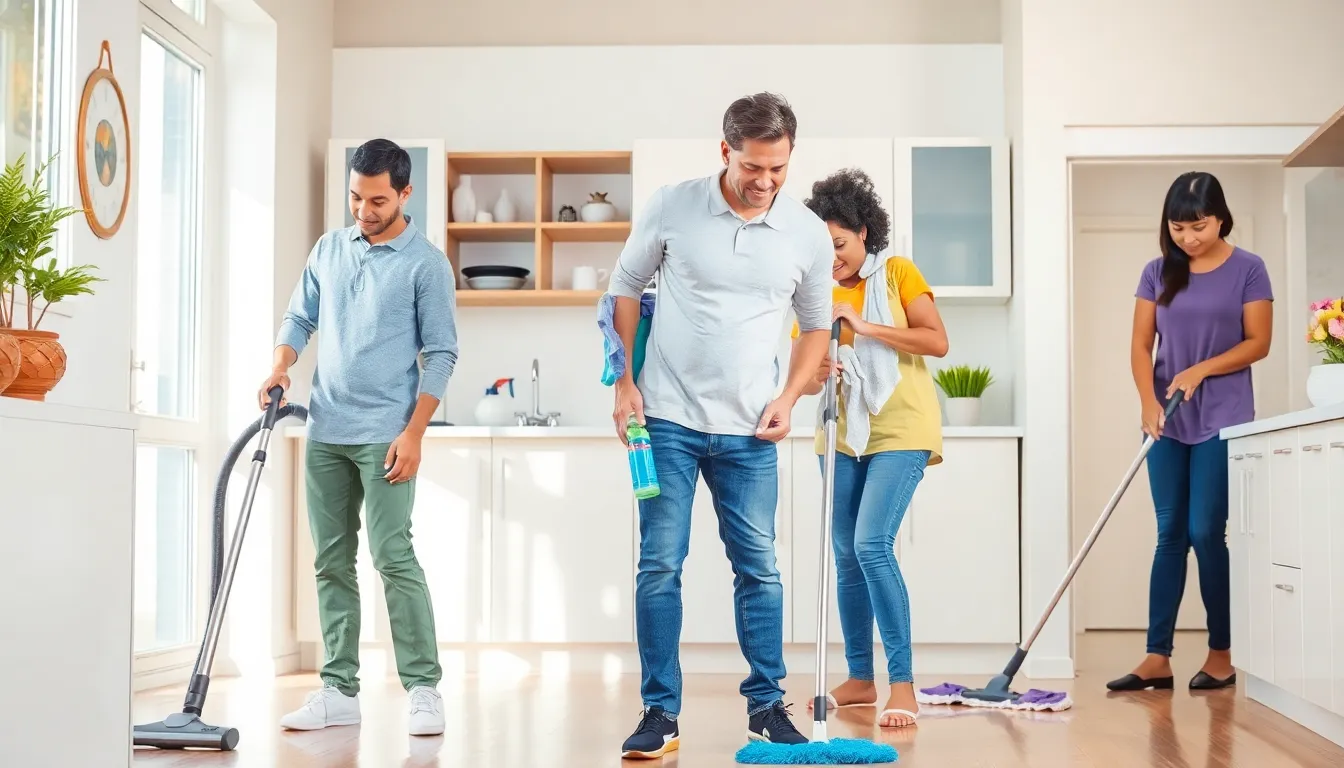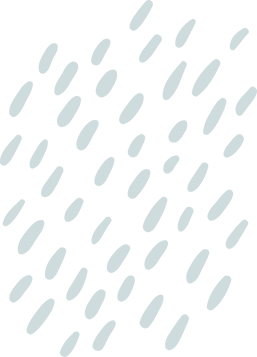In a world where dust bunnies seem to multiply faster than rabbits, cleaning efficiency becomes the holy grail of home maintenance. Imagine zipping through chores like a cleaning ninja, leaving surfaces sparkling and grime trembling in fear. With the right strategies, anyone can transform their cleaning routine from a dreaded chore into a swift and satisfying mission.
Table of Contents
ToggleWhat Is Cleaning Efficiency?
Cleaning efficiency refers to completing cleaning tasks in the shortest possible time while achieving maximum cleanliness. It optimizes both effort and resources, allowing for effective results without unnecessary strain. Many factors contribute to it, including techniques, tools, and work organization.
Techniques matter greatly. Utilizing methods like the two-bucket system or working from top to bottom ensures dirt and dust don’t spread during cleaning. Appropriate tools also play a pivotal role. High-quality vacuums, microfiber cloths, and effective cleaning solutions can drastically reduce time spent on each task.
Organization impacts efficiency significantly. Creating a cleaning schedule with designated times for various tasks helps establish a routine, minimizing wasted time. Dividing large areas into smaller sections allows for manageable cleaning, promoting focus and completion without feeling overwhelmed.
Training and knowledge further enhance cleaning efficiency. Knowing how to tackle various surfaces—such as tile versus wood—ensures effective cleaning without damaging materials. Familiarizing oneself with the best practices for each room type leads to quicker and more efficient results.
Prioritizing essential tasks also enhances overall efficiency. Identifying high-traffic areas for frequent cleaning addresses visible dirt and potential health hazards promptly. Keeping cleaning supplies organized and within reach streamlines the process, enabling faster task completion.
Ultimately, cleaning efficiency transforms the cleaning process from a daunting chore into a more manageable and satisfying experience. Emphasizing effective techniques, proper tools, organized schedules, and continual learning maximizes outcomes while minimizing effort.
Factors Affecting Cleaning Efficiency

Cleaning efficiency hinges on several key factors that streamline the process and enhance results. Understanding these elements helps achieve optimal cleanliness with minimal effort.
Cleaning Agents
Cleaning agents play a critical role in effective cleaning. Selecting the right cleaning products based on surface type ensures maximum dirt removal. For example, using all-purpose cleaners works well for various surfaces, while specialized agents target specific stains. pH-balanced cleaners prevent surface damage, maintaining the integrity of materials. Additionally, greener products are gaining popularity, as they are less harsh on the environment. Effectively combining these agents maximizes efficiency and minimizes cleaning time.
Equipment Used
Equipment significantly impacts cleaning efficiency. High-quality vacuums equipped with HEPA filters capture dust and allergens effectively. Microfiber cloths, known for their ability to trap dirt, reduce the need for additional chemicals. Mops with detachable pads simplify floor cleaning, while steam cleaners eliminate bacteria using only heat. Investing in ergonomic tools reduces strain and enhances maneuverability. Overall, using the right equipment can make cleaning quicker and more effective.
Techniques and Methods
Effective techniques and methods streamline the cleaning process. The two-bucket system separates dirty water from clean for more hygienic results. Starting from the top and working down prevents dirt from resettling on already cleaned surfaces. Utilizing the ‘clean as you go’ method helps maintain order during larger cleaning tasks. A focused approach, such as tackling one area at a time, reduces overwhelm and improves overall effectiveness. Applying these methods contributes to a faster, more satisfying cleaning experience.
Measuring Cleaning Efficiency
Measuring cleaning efficiency involves assessing how effectively tasks are completed. Performance metrics provide insight into the time taken, the areas covered, and the quality of cleanliness achieved.
Performance Metrics
Key performance metrics include time spent per task, area coverage per hour, and surface cleanliness percentages, which help evaluate efficiency. Tracking time allows identification of tasks that consume unnecessary minutes. Area coverage illustrates which cleaning methods yield the best results in the shortest time. Cleanliness percentages provide quantitative data on how much dirt and grime are removed, ensuring that the cleaning meets acceptable standards. Regularly reviewing these metrics aids in refining cleaning practices, ultimately contributing to improved efficiency.
Standardized Tests
Standardized tests evaluate cleaning agents and equipment under consistent conditions, ensuring reliable results. These tests measure how well products remove dirt, kill germs, or maintain surface quality across various materials. Assessing performance in controlled environments eliminates variability and enables fair comparisons. Manufacturers often use standardized tests to showcase product effectiveness, helping consumers make informed choices. Relying on reputable standards ensures that the effectiveness of cleaning solutions aligns with cleaning efficiency goals.
Ways to Improve Cleaning Efficiency
Enhancing cleaning efficiency involves strategic approaches and the right tools. Implementing effective training and embracing technological innovations can lead to substantial improvements.
Training and Education
Training programs promote skill development in cleaning techniques. Educating staff about various surface types ensures the right products are used, preserving material integrity while maximizing cleanliness. Professional cleaning services benefit from ongoing education on new products and trends, which informs best practices. Familiarizing team members with effective methods, like the two-bucket system and ‘clean as you go’, reduces time spent on tasks. Regular workshops can motivate staff, leading to a more efficient and knowledgeable cleaning crew.
Technology and Innovations
Smart technology optimizes cleaning efficiency through automated solutions. Robotic vacuum cleaners navigate spaces independently, continuously saving time in routine tasks. Advanced cleaning products provide effective results using minimal effort, enhancing overall effectiveness. Mobile apps enable tracking cleaning schedules and performance metrics, ensuring consistent cleanliness. Integrating innovations, like HEPA-filter technology, captures allergens and improves indoor air quality. By adopting these tools, organizations can streamline operations, leading to improved cleaning outcomes.
Cleaning efficiency is a game changer in home maintenance. By adopting effective techniques and utilizing the right tools, individuals can transform cleaning from a tedious chore into a streamlined process. The focus on organization and continual learning empowers people to tackle tasks with confidence and ease.
Embracing innovative technologies and methods not only enhances effectiveness but also ensures a healthier living environment. As cleaning efficiency becomes a priority, it leads to more manageable routines and ultimately a more satisfying experience. With the right mindset and strategies in place, achieving a spotless home is not just a dream but an attainable reality.




